It's a Marvelous Night for a Moondance
11/08/2022. A total lunar eclipse early this morning and an ISS transit a day and a half later kept me busy.
I shot the eclipse under clear skies with nothing but telephotos and a simple tripod; the transit took place under the pall of incoming Hurricane Nicole. It took just about all the post-processing tricks I know to pull a decent image from high-altitude murk.
Click any picture on this page for
a larger, clearer, better view!
First, the eclipse.
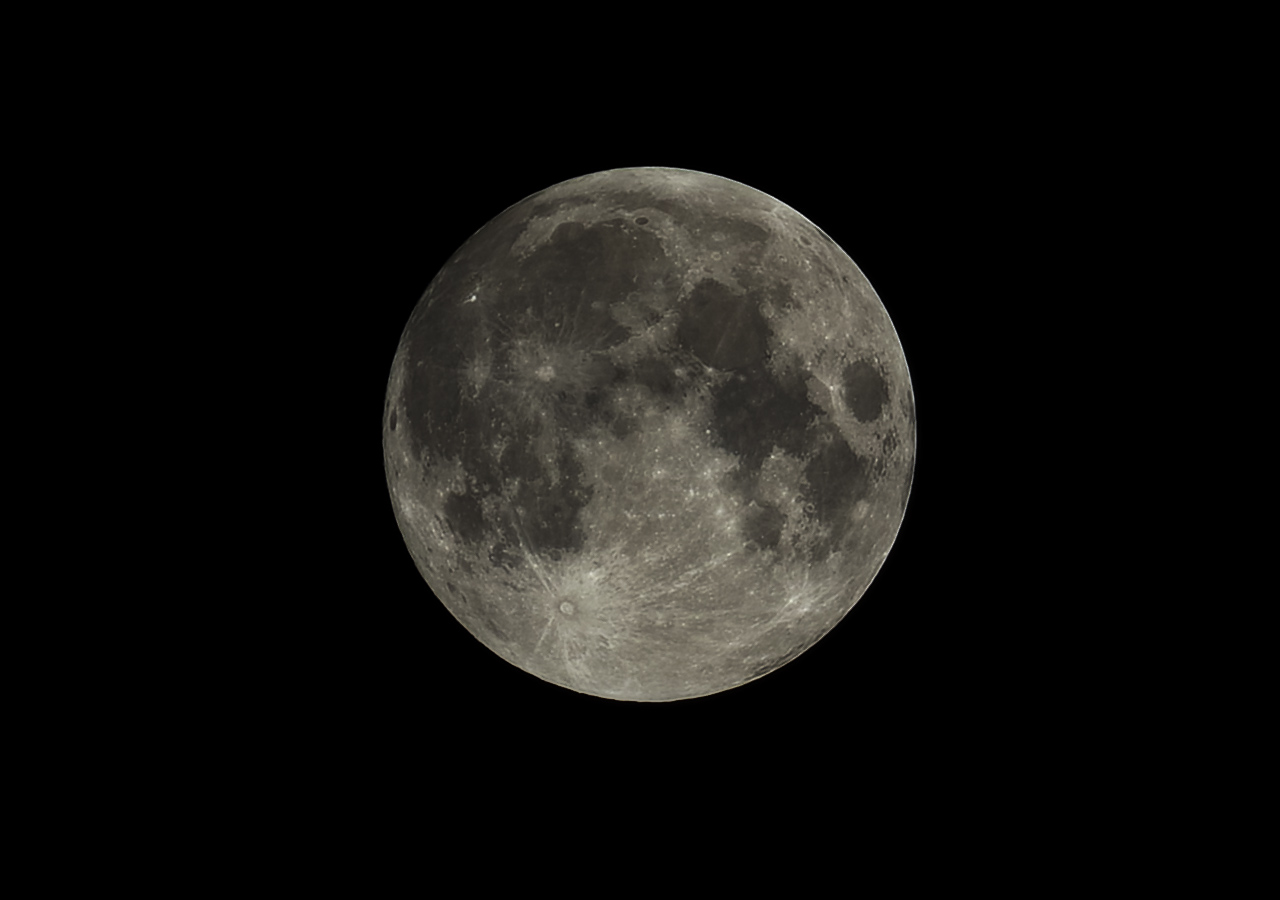 The seemingly colorless Moon a few hours prior
The seemingly colorless Moon a few hours prior
to penumbral contact. This is a stack of 26 fames through a
70-200mm F4L+ 2x converter on a fixed tripod.
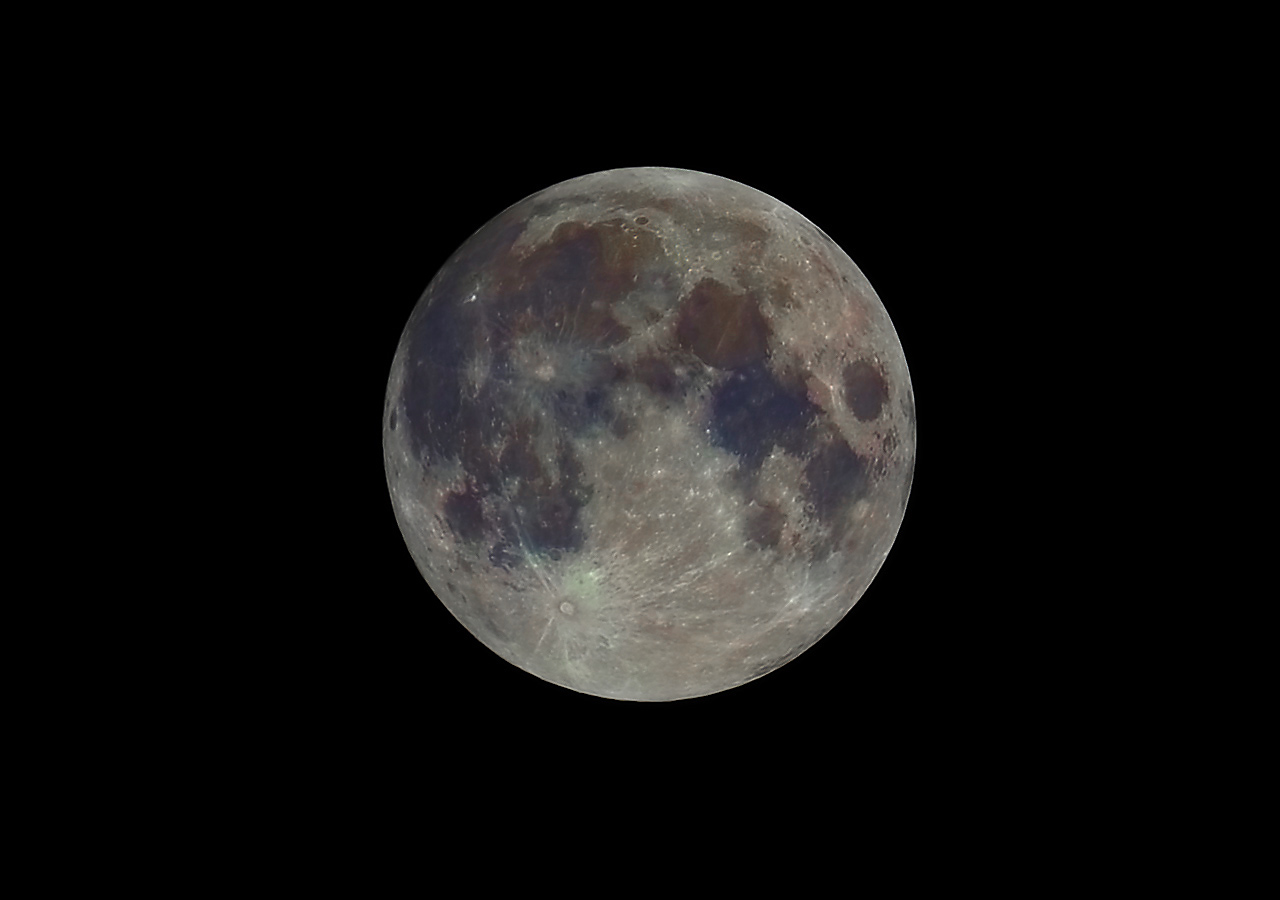
The same image with saturation boosted to show mineralogical features.
The Moon is colorful in more ways than one.
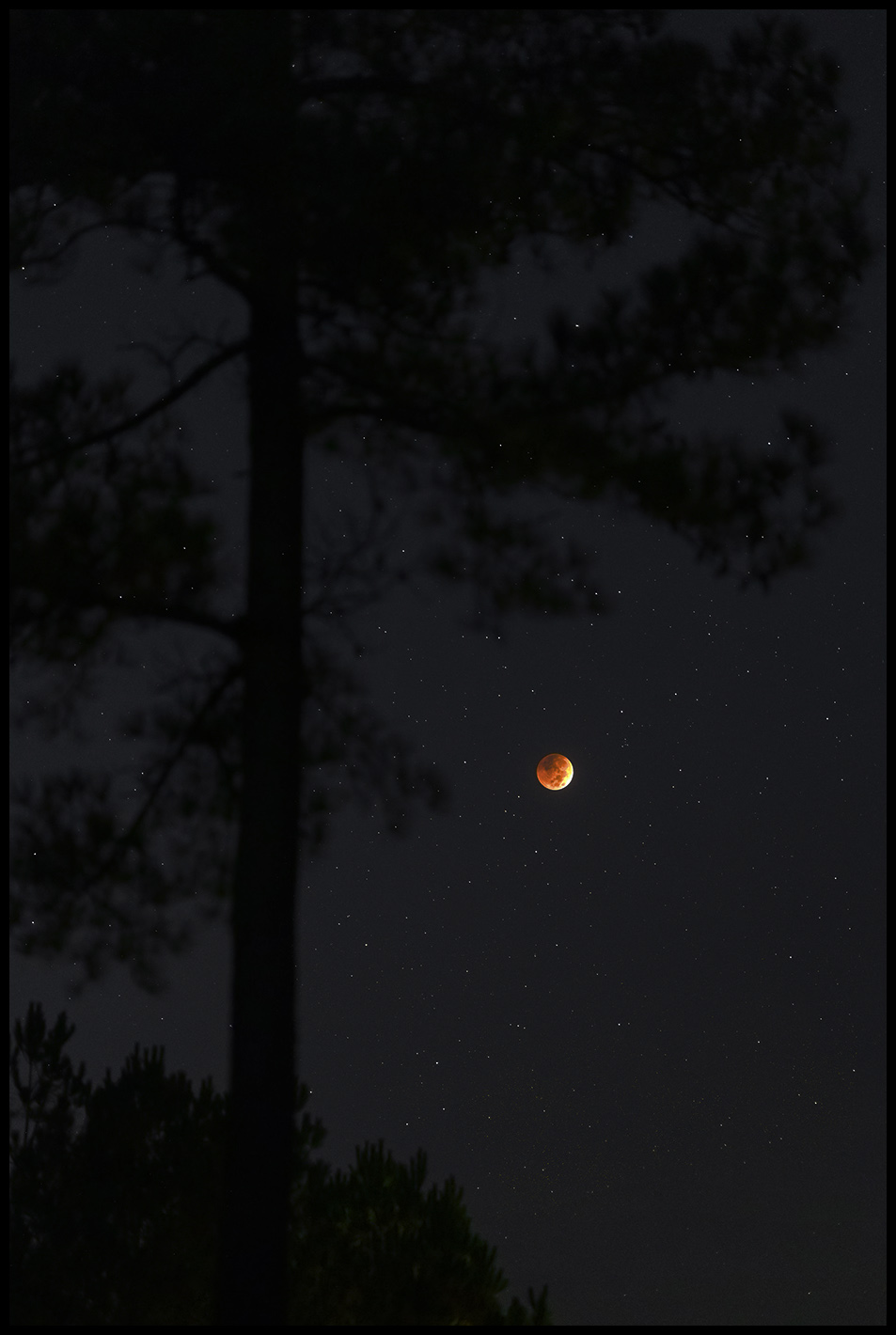
The beginning of totality. 105mm Sigma, F1.4,
1s to 1/30s at ISO 12,800. HDR for stars and Moon.
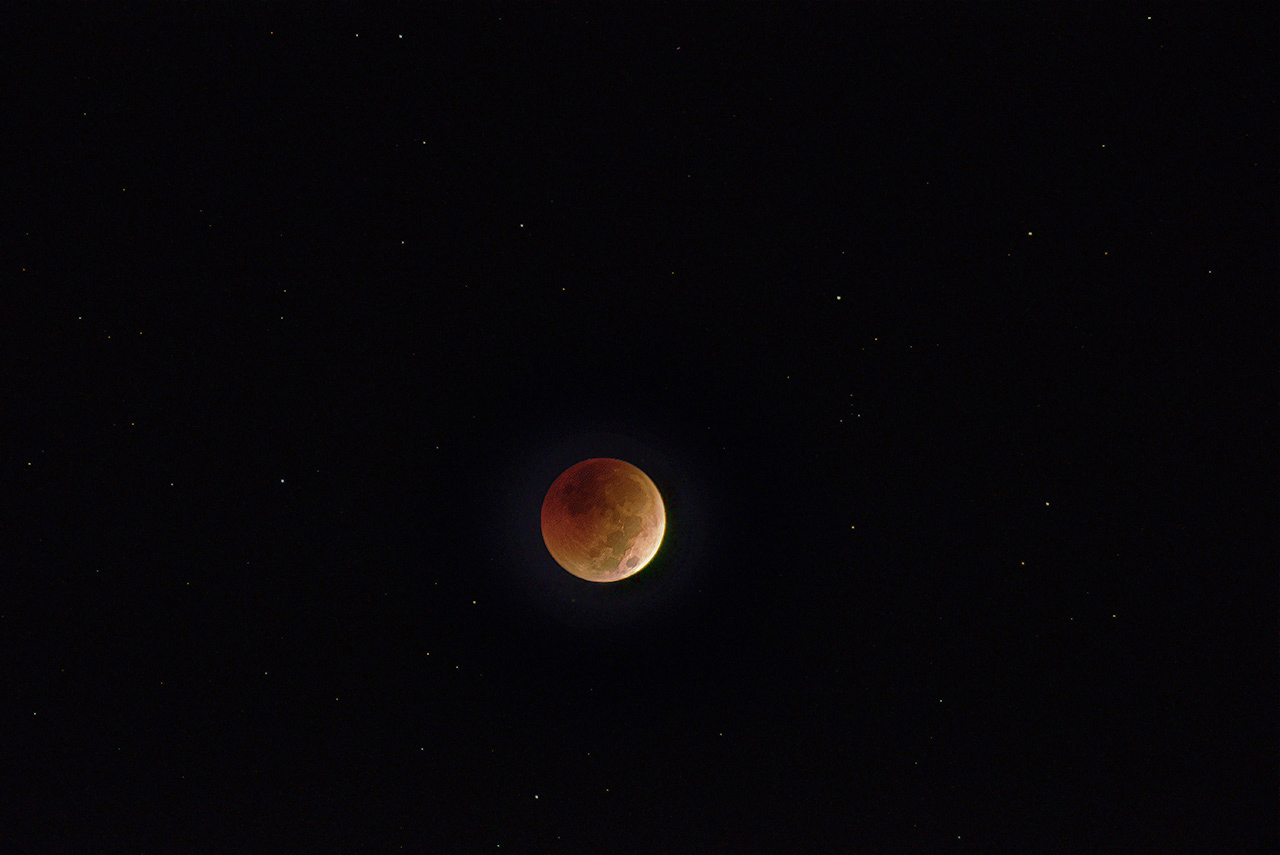 70-200mm F4 + 2x converter. 16 images stacked in Pixinsight. 70-200mm F4 + 2x converter. 16 images stacked in Pixinsight.
Look up the EXIFs -- damned if I remember.
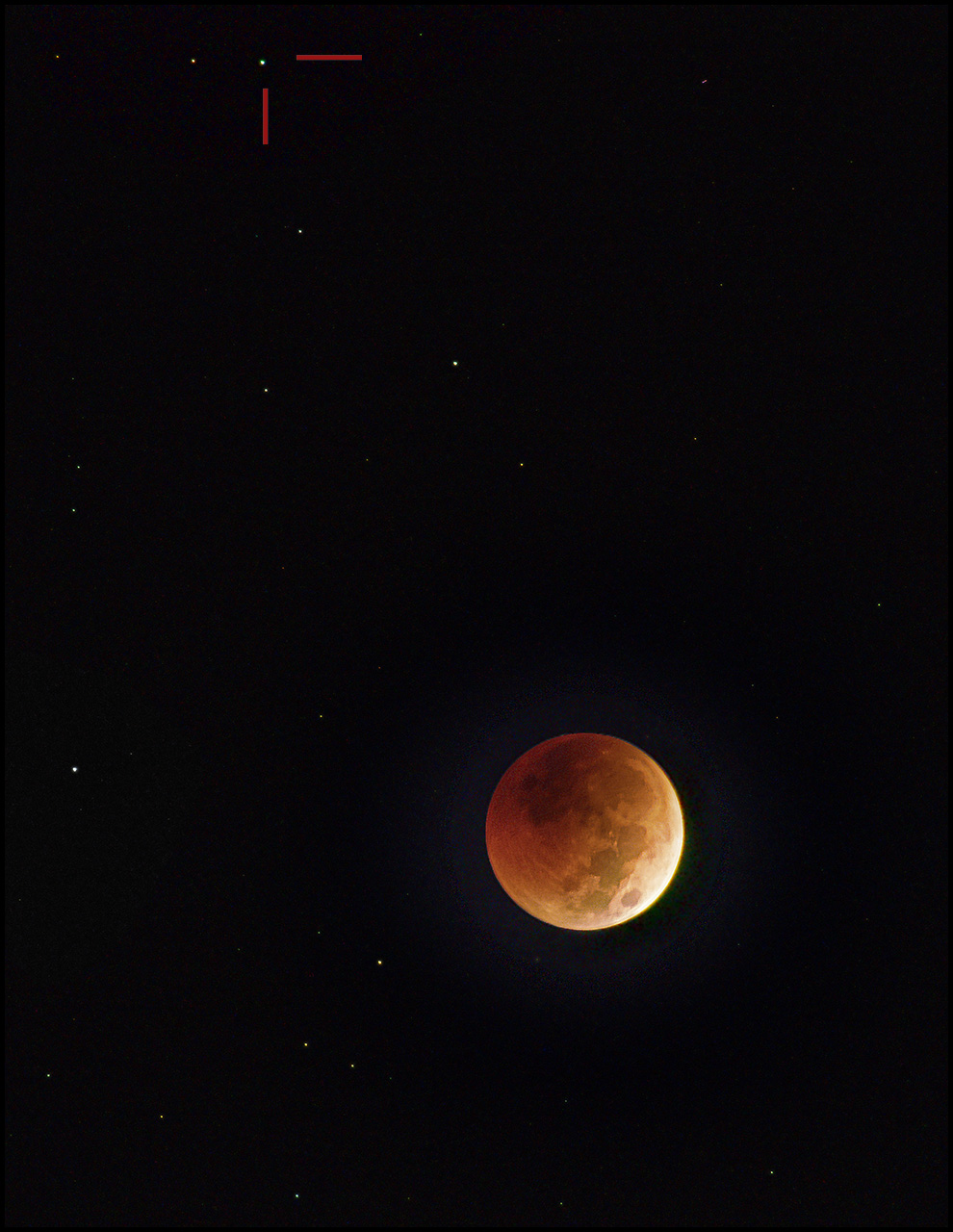
Crop from previous image. Uranus marked.
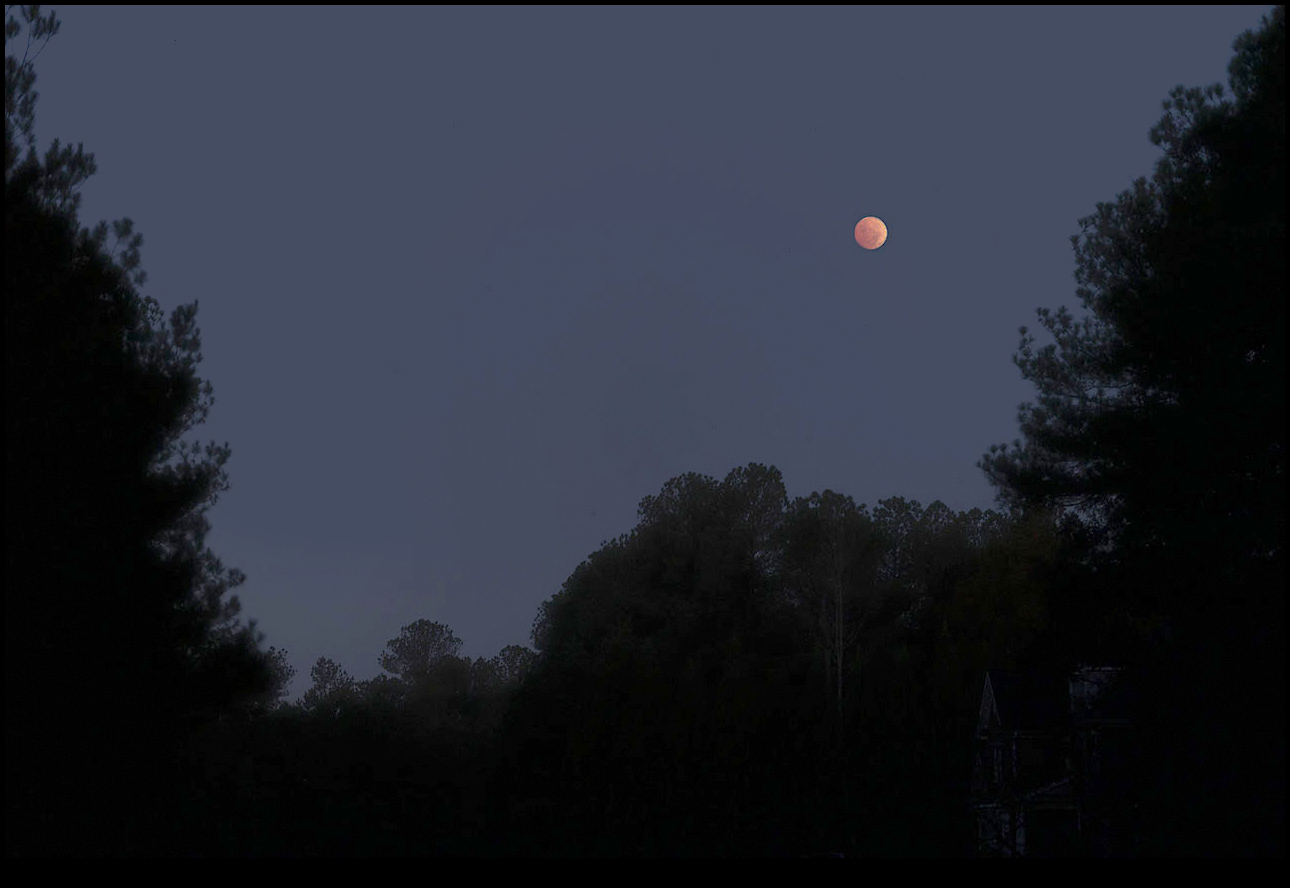
Dawn cuts the show a little short.
11/09/2022. The ISS comes to town. I had only to get out from under the pines and point a camera at the Moon; this time the station came to me. I used the TMB92SS with a 2x TeleVue Big Barlow and no flattener or compressor, the tiny ASI178MM camera, the CF-31 Toughbook running Firecapture 2.7beta, and the LXD-55 mount. I watched from the community lot.
High clouds from Hurricane Nicole made things "interesting." The Moon went from perfectly clear in frequent gaps to all-but-invisible in the thicker bits. In fact, it went from almost clear to nearly invisible in the 10 seconds immediately prior to the transit. Looking at the screen, I scrambled to increase exposure, gain, and adjust gamma as the light faded. I saw nothing. I don't mean I didn't see the station; I mean that at the appointed second, my screen was empty and black. Just a few seconds after that, the Moon was in the clear. I fumed and kicked dirt for an hour, then pulled the data into the real computer and went to work on it.
The image was almost what I went to get; it, and especially the video, just took a lot more fussing than I expected.
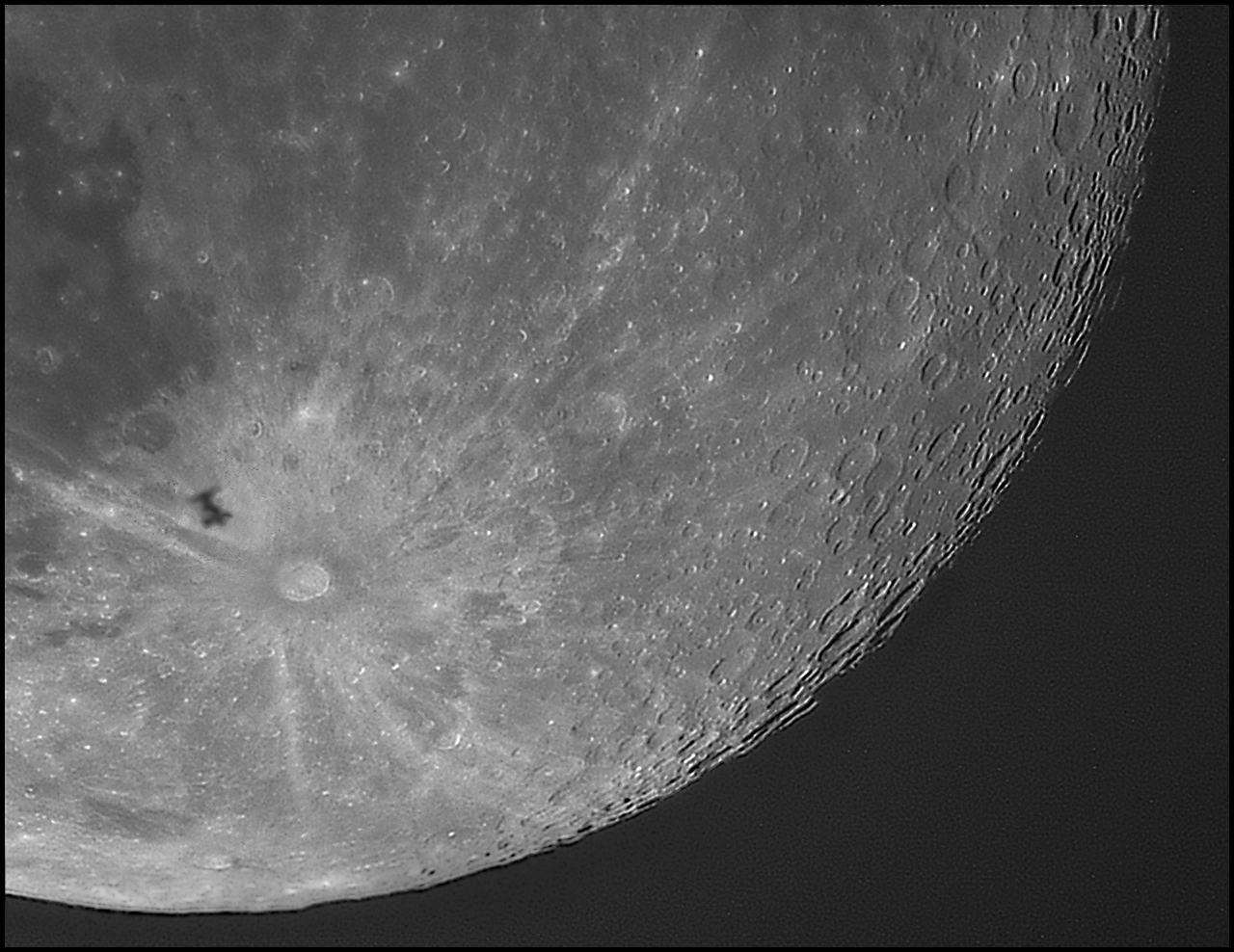
Just click it and make it big.
The sordid tale of post processing follows.
The Moon is a fully processed stack (Autostakkart!3, IMPPG) of the best 40 frames from 300 acquired in the several seconds immediately prior to the transit, before clouds forced me to lengthen the exposure, increase gain to ridiculous levels, and lean on the gamma slider. The ISS appeared on 15 frames acquired at just over 35 frames per second. As luck would have it, the sharpest single image of the station came as it sailed by Tycho. I wanted to hold the ISS exposures to 0.5 milliseconds to keep blurring by the station's transverse motion to one pixel or less. Instead, I had to use 5x that exposure, which allowed the station to move about 15 meters during each exposure. That's enough, even at this scale and at a range of 680 km, to introduce discernable blur (about 4.5 arc seconds). It was good practice.
I'll include a link to some of the video from which this was distilled by and by.
:: top ::
|